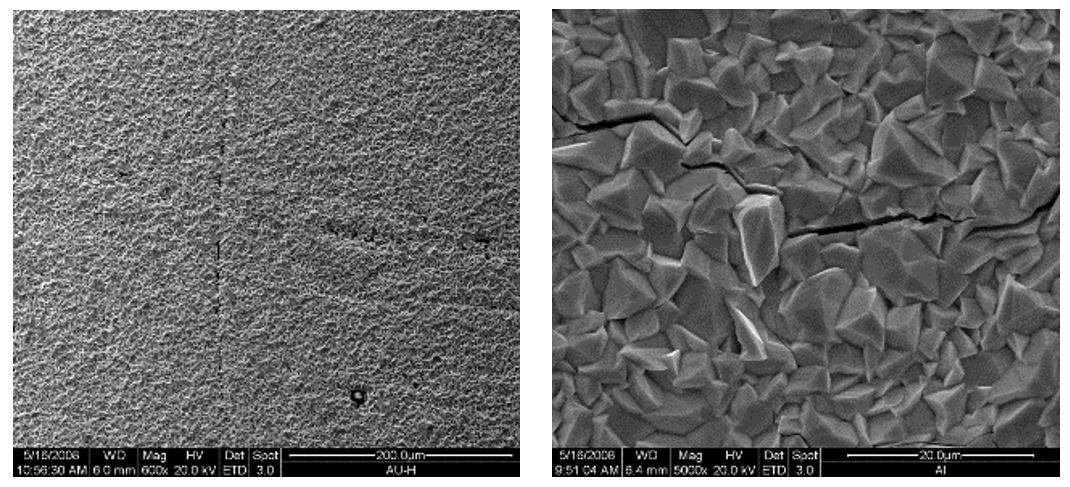Metals
1. Antimony
The deposition of antimony-containing materials from single-source-precursors is associated with several problems, particularly the extremely low vapor pressure of crystalline precursors. Therefore, we are interested in the establishment of novel Sb-precursors. Recently we found in mass spectroscopic studies that distibines Sb2R4 such as tetramethyl- and tetraethyldistibine are very promising precursors, because they disproportionate cleanly at very low temperatures (T <250 °C) into elemental antimony and the corresponding trialkylstibine. [1] In contrast, the trialkylstibine SbR3 have significantly higher decomposition temperatures (> 400 °C).
Initial deposition studies with Sb2Et4 in a hot-wall-reactor gave promising results. Crystalline Sb-films were received at temperatures as low as 200 °C. Therefore, Sb2Et4 seems a suitable low-temperature precursor for the growth of antimony-containing material films by classical dual source procedure [2].
References
[1] N. Bahlawane, F. Reilmann, S. Schulz, D. Schuchmann, K. Kohse-Höinghaus, J. Am. Soc. Mass Spectrom. 2008, 19, 1336.
[2] D. Schuchmann, M. Schwartz, S. Schulz, A. Seemayer, K. Wandelt, J. Cryst. Growth, 2008, 310, 4715.

